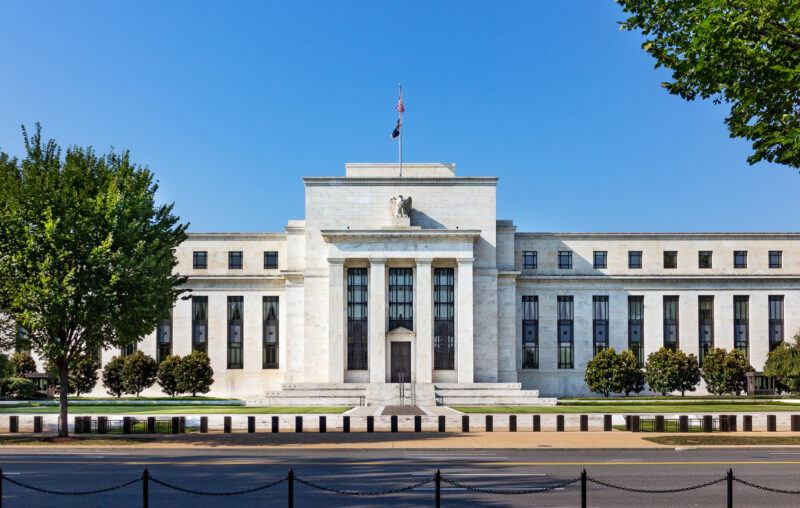“Woke” Fed Fell Asleep on the Job

The Federal Reserve has become increasingly concerned with “woke” issues like inequality and climate change. These concerns have distracted Fed officials from their core mission of price stability. The Fed’s preferred measure of inflation hit 6.59 percent in March. The price level is now 4.6 percentage points higher than it would have been had the Fed hit its 2-percent target over the course of the pandemic. With inflation raging at the highest rate in 40 years, it is time to reexamine the Fed’s legitimate responsibilities.
Regarding monetary policy, a central bank has one—and only one— legitimate obligation: to maintain price stability via transparent activities that conform to the rule of law.
Actions inconsistent with long-run price stability reduce overall welfare. They also open the door for wealth to be diverted to special interests at the expense of the general public. This is the road to economic inefficiency, arbitrary wealth redistributions, politicization of monetary policy, and chaos.
The best service the Fed can provide is to singularly pursue a stable, transparent, and predictable monetary framework. The Fed can achieve this by creating money at a rate that stabilizes overall spending. Such a policy benefits all members of society. It creates low and steady inflation, which allows households and businesses to plan more effectively so that economic activities are better coordinated. And it dampens business cycles by requiring the Fed to offset changes in private spending to maintain price stability.
Historically, the Fed’s pursuit of goals other than price stability has led to a great deal of monetary malfeasance. In pursuit of higher labor employment, the Fed created money too rapidly in the 1970s, causing the Great Inflation. Similar pursuits led the Fed to adopt an average inflation target in 2020. After letting inflation fall below their 2-percent target for most of the period from 2014 to 2020, the Fed decided to let inflation run over 2 percent for an undisclosed period in hopes of lowering unemployment and reducing income inequality. This deliberate attempt by the Fed to raise inflation has accommodated pandemic-related government spending programs and negative supply disruptions. High inflation is the result.
Even more concerning is the current Fed’s expressed interest in pursuing “inclusive” monetary policies, which attempt to advance the interests of particular “stakeholders” in society. This opens Pandora’s box. The list of potential stakeholder groups to target is limitless, and there is no objective way to resolve conflicts between and among them.
Some progressives have called for the Fed to finance a Green New Deal, while some conservatives want the Fed to finance construction of a border wall. Opening monetary policy to such issues inherently politicizes the Fed and threatens its independence. Monetary policies with explicitly political agendas are inherently divisive, not inclusive. And it is a mistake to assume that a political power, once granted, will only be used by the wise and for the good.
The Fed is the wrong institution to use for pursuing a stakeholder goal of income equality. That is the role of elected officials and the tax and transfer system. The Fed’s monetary policy tools broadly affect macroeconomic variables like interest rates and inflation, and are therefore poorly suited for the task of pursuing particular stakeholder interests.
Yet preoccupation with income equality has inspired the Fed to pursue excessively low interest rate policies. However well-intended, these policies have contributed to our current inflationary predicament. To bring inflation back down, the Fed is now attempting to switch stances and raise interest rates quickly. This will undermine the economy, which already contracted in the first quarter of 2022. No wonder forecasters are predicting a high chance of recession.
If a recession does materialize, it will disproportionately harm the least well-off. During recessions, workers with the least experience and education are the first to be laid off. This disproportionately raises unemployment rates for lower income groups such as students and minorities. These Americans would be better off if the Fed were to focus exclusively on price stability rather than trying to stimulate the economy for their benefit.Since 1977, the Fed has had a dual mandate from Congress to promote price stability and maximum sustainable employment. The employment mandate is superfluous, as a central bank that pursues price stability already does the most it can do to stabilize employment. Yet the employment mandate has been a source of unnecessary distraction. The interests of all Americans would be better served if the Fed’s charter were revised by Congress to have a single mandate of price stability. Explicit confinement to this lone mandate would help prevent the Fed from falling asleep on inflation again.












